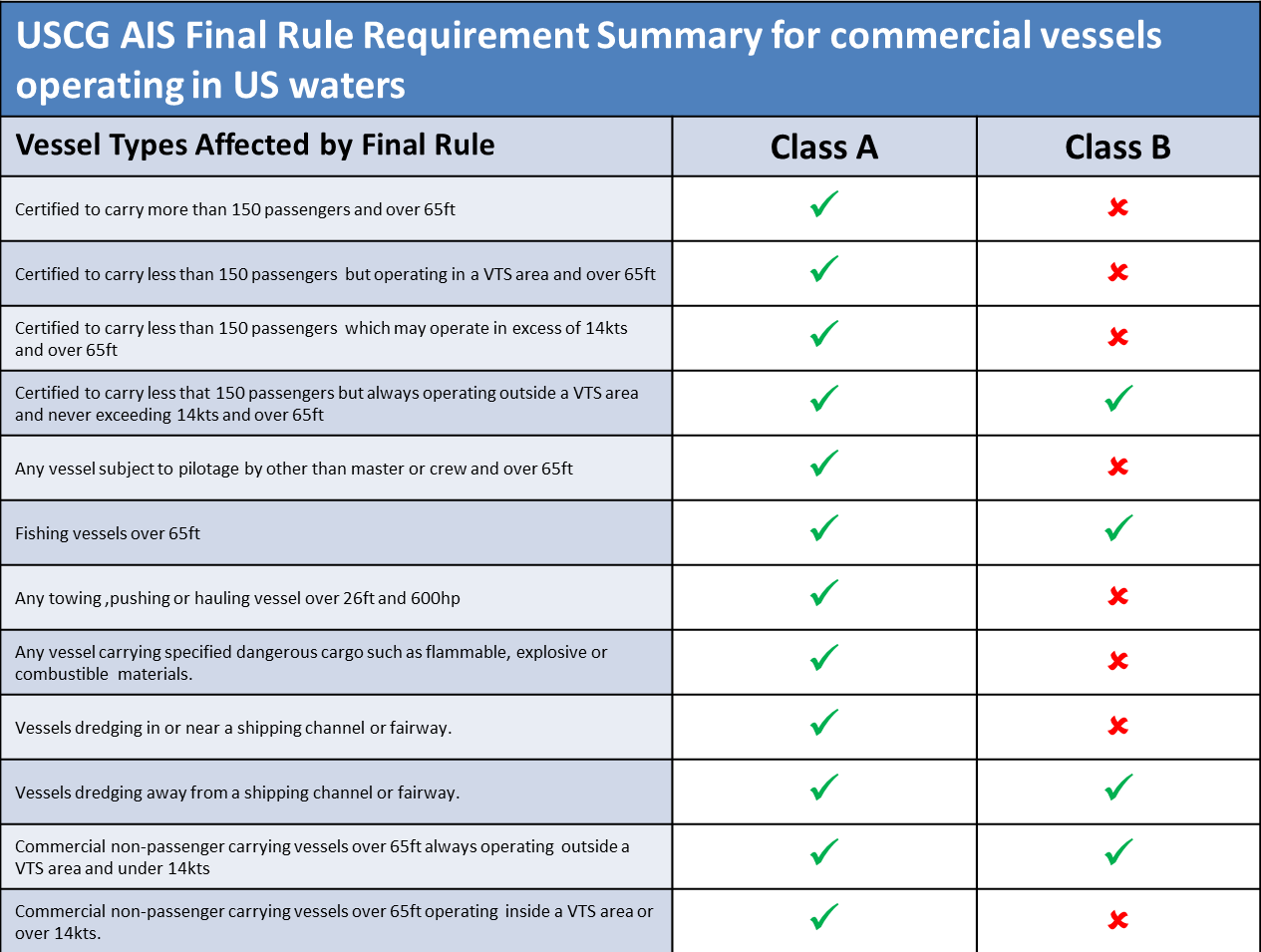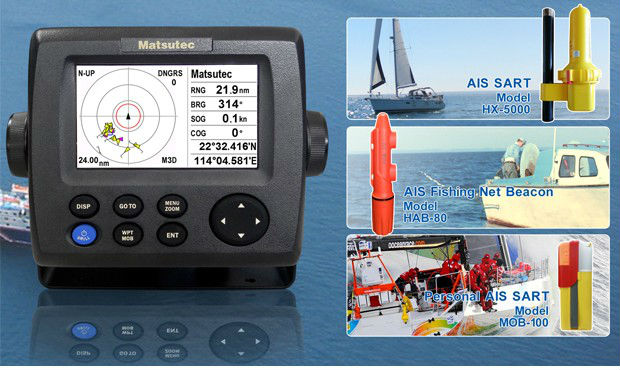
AIS units for small charter fleet:
AIS
(or Automatic Identification System A or B ) is a international
transponder system
for
ships intending to increase the safety at sea world wide.
It operates in the VHF
band. The two frequencies used worldwide are 161.975 and 162.025 MHz
(channels 87B and 88B, or AIS1 and AIS2). The signal is transmitted
via external VHF antenna and has the reach of normal VHF signal in
line of sight.
An AIS transmitter regularly transmits
the ship's
position, heading, speed and MMSI (the unique maritime identification
number). This data is received by ships in the vicinity or land
stations.
The data can be plotted automatically on
a digital map or
radar screen. Several computer programs have been created for use
with AIS data.
Some programs such as ShipPlotter and
Gnuais use a
computer to
demodulate the raw audio from a modified marine VHF
radiotelephone,
tuned to the AIS frequencies.
The data can be displayed with charting programs as OpenCPN which is a Chart-plotter and GPS Navigation Software.
This would allow the land base office to
keep track of each of
their ships, their speed and location and estimated time of arrival
at the dock, as well as the possibility of keeping a watchful eye
over them in case they come of course.
Till recently AIS equipment was cost-prohibitive for smaller companies and did not reach its recognition but stayed in service for the big commercial fleet.
With
Dez. 2014 USCG AIS rules changed

With the AIS B system aimed at lighter commercial and leisure markets new products reach the market like the GPA-33
The GPA-33 is a 4.3"
color LCD display AIS B transponder combo with GPS navigator in a
small form factor like the Furuno GP-33 GPS it can be top mounted or
flush mounted.
With a price of approximately 500,- per unit it should allow even small charter companies to equip their fleet.

At the base office you can either buy your own MarineGadget Radar - AIS Receiver or partner with http://www.vesseltracker.com/en/Home.html and use your existing infrastructure to build the worlds AIS tracking system
as in December 2004, the International Maritime Organization IMO 's Maritime Safety Committee condemned the Internet publication of AIS data as follows:
In relation to the issue of freely available automatic identification system (AIS)-generated ship data on the world-wide web, the publication on the world-wide web or elsewhere of AIS data transmitted by ships could be detrimental to the safety and security of ships and port facilities and was undermining the efforts of the Organization and its Member States to enhance the safety of navigation and security in the international maritime transport sector.
The softwear from OpenCPN is free of charge as are the NOA charts for your area.
Ship Station
License from the FCC
For the AIS
1. Detail Target list and Radar overview
2. Watching display to monitor important subject, example: Fishing net buoy, Friend ship, Commercial traffic etc
3. External Alarm (Buzzer)
4. Low cost, reduced size and easy installation make the HP-33A ideal to meet your budgets and demands of owners and vessel operators
For the GPS
1. 4.3" Sunlight Viewable color LCD (Brightness: 500 cd)
2. GOTO track navigation
3. Stores up to 10,000 marks/ waypoints, 100 routes and 3,000 track points
4. Dedicated Man Over Board Button (MOB)
5. Support NMEA 0183 ver 2.0
6. 7 display modes available, including 2 user-customized modes
7. SBAS capable for better measurement